Cherwell
Cherwell Service Management is a comprehensive service desk verified for 11 ITIL processes. By combining it with xMatters, you can accelerate the notification of key personnel for major incidents to help reduce mean-time-to-resolution (MTTR) for the issues that could impact your business the most.
How it works
When a new incident is created in Cherwell, it triggers a One-Step Action within an Automated Process to send a JSON-formatted webhook to xMatters. A Cherwell trigger in xMatters parses the webhook and initiates a flow. The webhook includes essential incident data that xMattersuses to generate an alert and send notifications to users. Users can respond with comments to add a note to the originating event in Cherwell, or even resolve it with the tap of a button.
The default configuration (available as a downloadable blueprint) automatically adds the Assigned Team as a recipient to the alert. If your team names in Cherwell match your group names in xMatters, the Assigned Team will receive notifications for the alert.
Install the workflow
The following instructions describe how to install the workflow through the xMatters one-click installation process.
- Go to the Workflows Templates page and click the Cherwell tile.
- On the Set up the Workflow tab, give the workflow a name that identifies its purpose (this must be unique in your instance), add an optional description, and set the default incident type (if applicable). Any built-in Initiate Incident steps in the workflow will automatically be set to the selected incident type.
- You can edit these later, if needed.

- You can edit these later, if needed.
- Click Next to set up the connection.
- Copy the trigger URL — you’ll use this to configure the webhook in Cherwell.
- The trigger URL includes the recipients parameter, which specifies who should be notified. By default, this parameter is set to notify you (the logged in user), but you can set it to target any user or group you want.
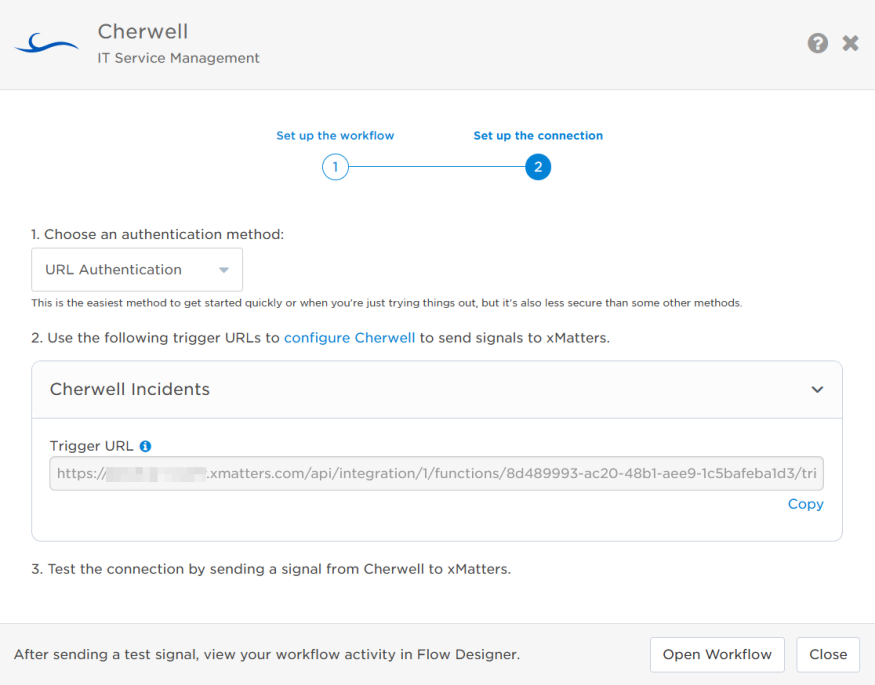
- The trigger URL includes the recipients parameter, which specifies who should be notified. By default, this parameter is set to notify you (the logged in user), but you can set it to target any user or group you want.
- Send a test signal to the trigger URL to test the connection.
- Click Open Workflow to view and customize the workflow, or Close to return to the Workflows page.
Now that the workflow is installed and you have the trigger URL, let's to go to Cherwell and configure it to communicate with xMatters.
Configure Cherwell to send requests to the trigger URL
To have Cherwell send alerts to the flow trigger, you need to import the xMatters blueprint, and then configure the webhook in a One-Step Action to use the trigger URL.
- Download the xMatters Cherwell Blueprint and save it to an easy-to-find location.
- Open Cherwell Administrator and, in the Categories menu, click Automation Processes.
- From the Pick a task options, select Open an existing Automation Process Blueprint.
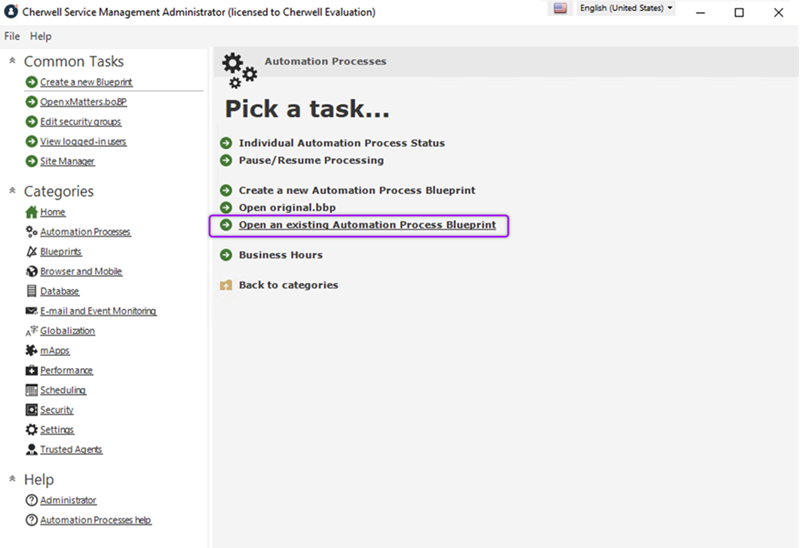
- Navigate to the location of the xMatters Blueprint you previously downloaded, and click Open.
- In the Edit Automation Processes window, scroll to the bottom of the list, right-click xMatters - Incident Created and then select Edit process.

- On the Simple Action/Event Automation Process window, select Action.
- Select the One Step radio button and then select New Incident from the drop-down list.
- Click the Browse button to the right of the One-Step field to open the One-Step Action Manager window.
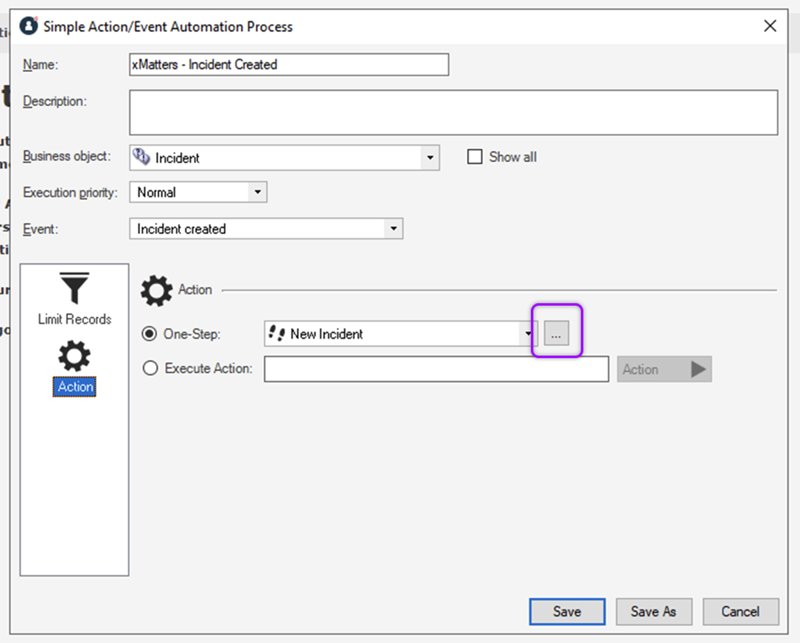
- In the One-Step Action Manager window, click New Incident, and then select Edit.
- In the One-Step editor, click the HTTP Request step to edit its details.
- In the Step Details for HTTP Request section, paste the trigger URL you copied from the Cherwell trigger in Flow Designer into the Url field. By default, the Assigned Team is used as the default recipient. For more information on setting alternate recipients, see Set recipients in the trigger URL.
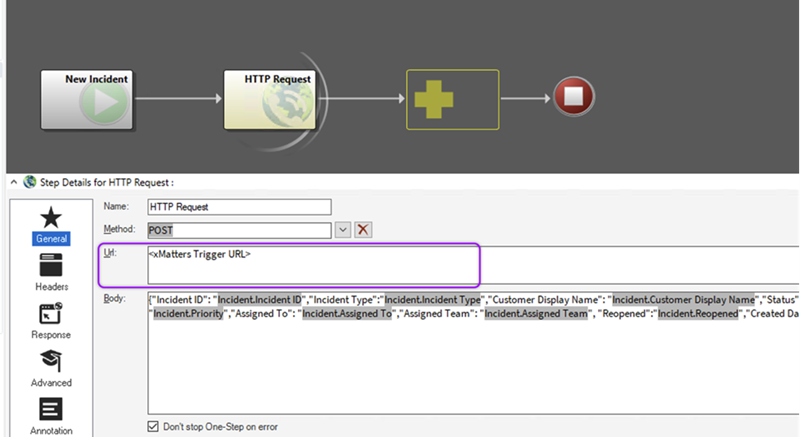
- Click OK to save the changes, click OK to close the One-Step Action Manager window, and then click Save to close the Simple Action/Event Automation Process window.
- On the Edit Automation Processes window, select File > Publish Blueprint.
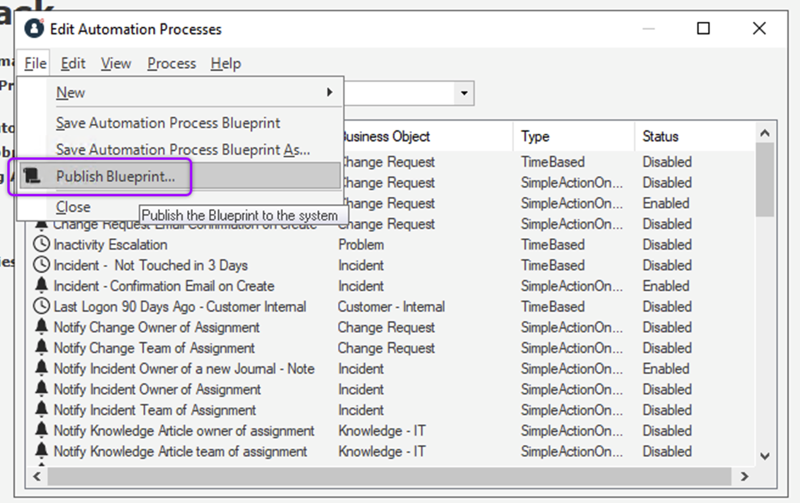
- In the Publish Options window, accept the default settings and click Publish.
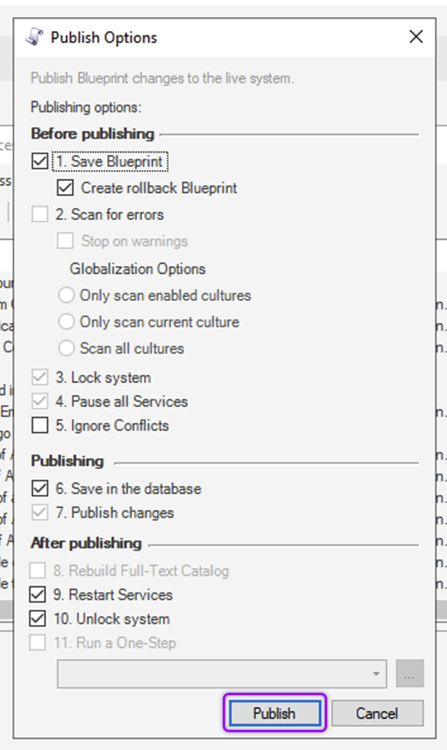
Once the Blueprint is published, you're ready to use the webhook to trigger automated flows, including steps such as sending alerts and initiating incidents, though we always recommend testing before putting things into use.
Set recipients in the trigger URL
By default, the workflow adds the Assigned Team as a recipient for the alert. You can add additional recipients to the trigger URL, but you will have to update the Alert Group step in the workflow to recognize Recipients.

When you copy the URL from xMatters, it includes the recipients parameter: &recipients=<yourname>. Of course, you don’t want to receive all the alerts.
To change the recipients for alerts from this webhook, swap out your name for the people or groups you want to target. For example, to target the DatabaseTeam, Antares Service Team, and HR & Marketing groups, add &recipients=databaseteam,antares%20service%20team,HR%20%26%20Marketing to the trigger URL. Remember to URL-encode any special characters, including spaces, in your group names.
We recommend using groups so you can take advantage of the xMatters group features — rotations, escalations, and absences — to reach the right on-call people to jump on an issue.
How to use the workflow
When a new incident is created in Cherwell, it sends a signal to xMatters, which creates an alert and notifies the individual or the on-call members of groups you set as recipients in the webhook URL. When the trigger receives a signal saying the issue is resolved, it automatically terminates related alerts in xMatters.
A person responding to the notification has the following response options:
- Acknowledge: Acknowledges the notifications and stops escalations.
- Escalate: Immediately escalates the alert to the next on-call resolver in the group.
- Add Note: Add a note to the incident in Cherwell.
- Initiate Incident: Initiates an incident in xMatters.
- Resolve: Resolves and closes the incident in Cherwell, terminates the xMatters alert, and stops notifying all targeted recipients.
Next Steps
Now that you've installed the workflow, you can use it as-is, or customize it to suit your needs better. Here are some examples of things you can add to the workflow to customize it:
- Use Slack, Zoom, and Microsoft Teams steps to add collaboration channels to the flow.
- Update the message sent to resolvers to include the information most relevant to your team.
- Use the Cherwell Incidents trigger to build your own custom flows.
